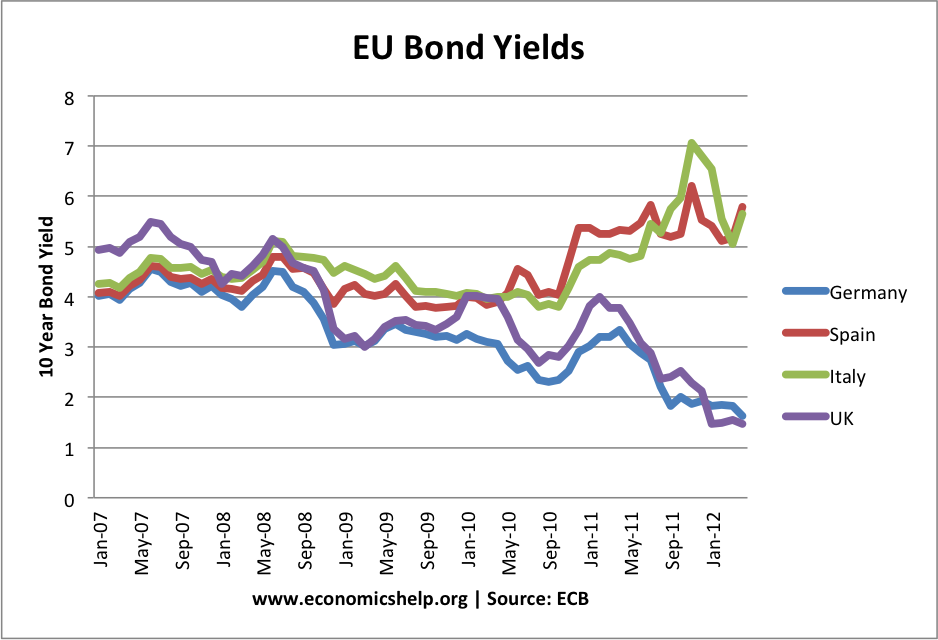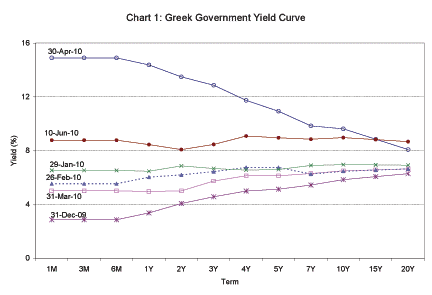Bonds Yield Spread Definition and Description
Post on: 21 Июль, 2015 No Comment

You can opt-out at any time.
Please refer to our privacy policy for contact information.
The term “yield spread” is one that you may see used quite frequently – and with good reason. The yield spread is one of the key metrics that bond investors can use to gauge how expensive or cheap a particular bond – or group of bonds – might be.
Very simply, the yield spread is the difference in yield between two bonds. If one bond is yielding 5.0% and another yields 4.0%, the “spread” is one percentage point. Spreads are typically expressed in “basis points ,” which is one-hundredth of a percentage point. Hence, a one-percentage point spread is typically said to be “100 basis points .” Non-Treasury bonds are generally evaluated based on the difference between their yield and the yield on the U.S. Treasury bond of comparable maturity .
Generally speaking, the higher risk a bond or asset class is, the higher its yield spread. Very simply, the reason for this difference is that investors need to be paid to take risk. If an investment is seen as being low-risk, investors don’t require a huge yield to tie up their cash. But if an investment is seen as being higher-risk, market participants will demand adequate compensation – a higher yield spread – to take the chance that their principal could decline.
As an example, a bond issued by a large, stable, and financially-healthy corporation will typically trade at a relatively low spread in relation to U.S. Treasuries. Conversely, a bond issued by a smaller company with weaker financial strength will trade at a higher spread relative to Treasuries. This explains the yield advantage of non-investment grade (high yield ) bonds relative to higher-rated, investment-grade bonds. It also explains the gap between higher-risk emerging markets and the usually lower-risk bonds of the developed markets .
The spread is also used to calculate the yield advantage of similar securities with different maturities. The most widely used is the spread between the two- and ten-year Treasuries, which shows how much extra yield an investor can get by taking on the added risk of investing in longer-term bonds .

What Yield Spread Movements Mean
Yield spreads are not fixed, of course. Because bond yields are always in motion, so too are spreads. The direction of the yield spread can increase, or “widen,” which means that the yield difference between two bonds or sectors is increasing. When spreads narrow, it means the yield difference is decreasing.
Keeping in mind that bonds yields rise as their prices fall. and vice versa, a rising spread indicates that one sector is performing better than another. For example, say the yield on a high-yield bond index moves from 7.0% to 7.5%, while the yield on the 10-year U.S. Treasury stays even at 2.0%. The spread has moved from 5.0 percentage points (500 basis points) to 5.5 percentage points (550 basis points), indicating that high-yield bonds underperformed Treasuries during this time.
The bottom line: there’s no such thing as a “free lunch” in the financial markets. If a bond or bond fund is paying an exceptionally high yield. there’s a reason for it: anyone who holds that investment is also taking on more risk. As a result, investors should be aware that simply picking fixed-income investments with the highest yield could result in their taking on more principal risk than they bargained for.














